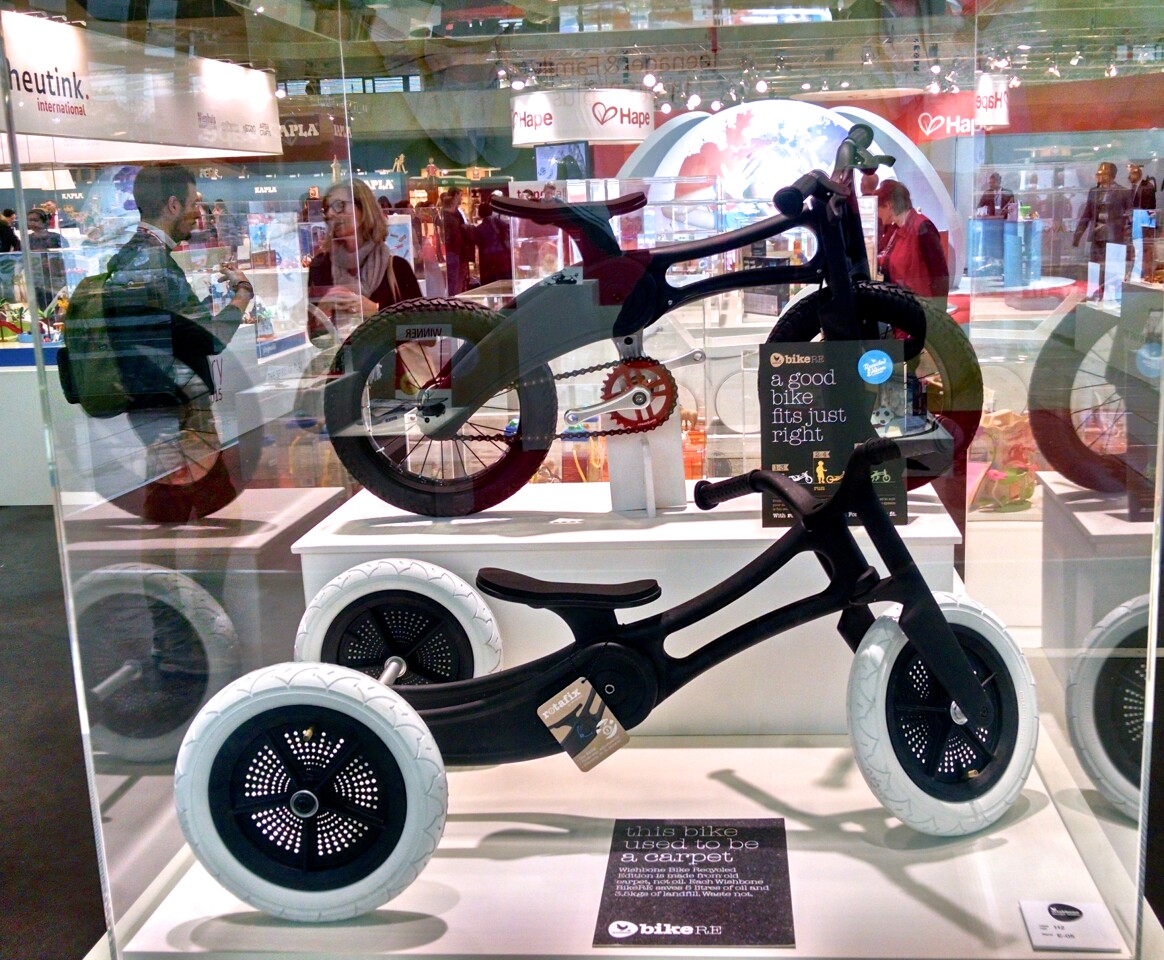New Zealand-based Wishbone Design has offered a versatile, 3-in-1 child's grow bike for several years. Last year, it made headlines by launching a model made from recycled carpet alongside its traditional wooden model. Now it's adding a modular pedal drivetrain to make the transforming bike even more versatile for growing children.
The highlight of the Wishbone Bike Recycled Edition that the company launched last year is its recycled-carpet frame. In an ingenious move, the company decided to save old, unwanted carpets from the long, slow demise of the landfill by recycling them into bike frames. The pre-used carpets from the United States are shaved, shredded, mixed with glass fiber for added strength, and turned into resin pellets. From there, Wishbone molds the pellets into bike frames.
The Recycled Edition is offered as a three-in-one package, starting off as a small push trike for children 12 months and older. The dual rear wheels with long axle swap out for a single wheel with short axle, creating a balance bike. The rear frame arm can be placed in either low position or flipped over to make a higher push bike for larger, older children up to six years old. The central, single-bolt Rotafix system allows for quick, easy frame reconfiguration and seat adjustment between 9 and 20 in (23 and 51 cm) in height. The Wishbone Bike design gives children between one and six years old a fun ride with 12-in air-filled rubber tires and prepares them for riding a real pedal bicycle.
Of course, every child is going to outgrow his or her push bike and graduate to a pedal bike eventually. Wishbone Design is encouraging those children to do so on the same bike they grew up on. At the recent Nuremberg Toy Fair, the company showed its all-new pedal kit, which adds one more configuration to the Recycled Edition.
Wishbone is still finalizing the design of the pedal kit, but the basic idea is that the pedals and single front sprocket will attach to the bike frame via the same central Rotafix bolt that allows for changing the seat height and frame orientation. A special hub kit will secure the rear cog to the standard 12-in wheel, and with the chain, the push bike is now a single speed pedal bike. Wishbone also plans to offer a set of 14-in spoked wheels with integrated cog to allow the bike to grow even more.

We asked Wishbone how long the pedal conversion takes, but since the kit is still in development, it has not yet timed the process. It tells us that it will encourage customers to take the bike into a shop to have the conversion done professionally but will also offer videos showing how it can be done at home.
One thing that Wishbone hasn't decided for sure is how the bike will stop. Stopping the bike with your feet is easy enough on a balance bike, but not on a pedal bike. The company explains that to meet US regulations it will need to offer either a freewheel set-up on a standalone wheel with pedal-braking coaster hub or a fixed hub. It also has a hand brake kit in development, which it showed at Nuremberg.
Though it sounds like it will be more expensive, we think that the freewheel/pedal brake is a more user-friendly option for a child's first pedal bike. A fixed hub seems like it could make the learning process difficult and frustrating while also eliminating the sheer, giddy childhood fun of coasting downhill. Don't hesitate to sound off with your own opinions in the comments section, as we're sure the company would appreciate the feedback as it nears a decision.
Wishbone plans to begin selling the pedal kit as a standalone option later this year and estimates retail pricing at US$100. The Recycled Edition bike retails for $199 for the 2-in-1 version (small push bike/large push bike) and $229 for the 3-in-1 (with trike hardware).
Source: Wishbone Design









